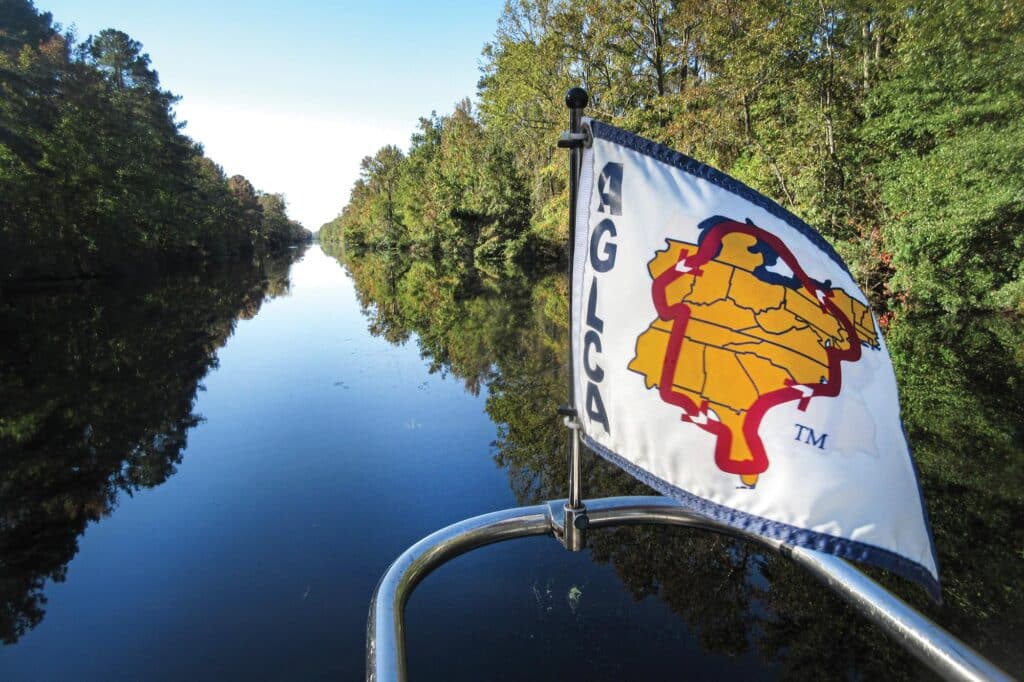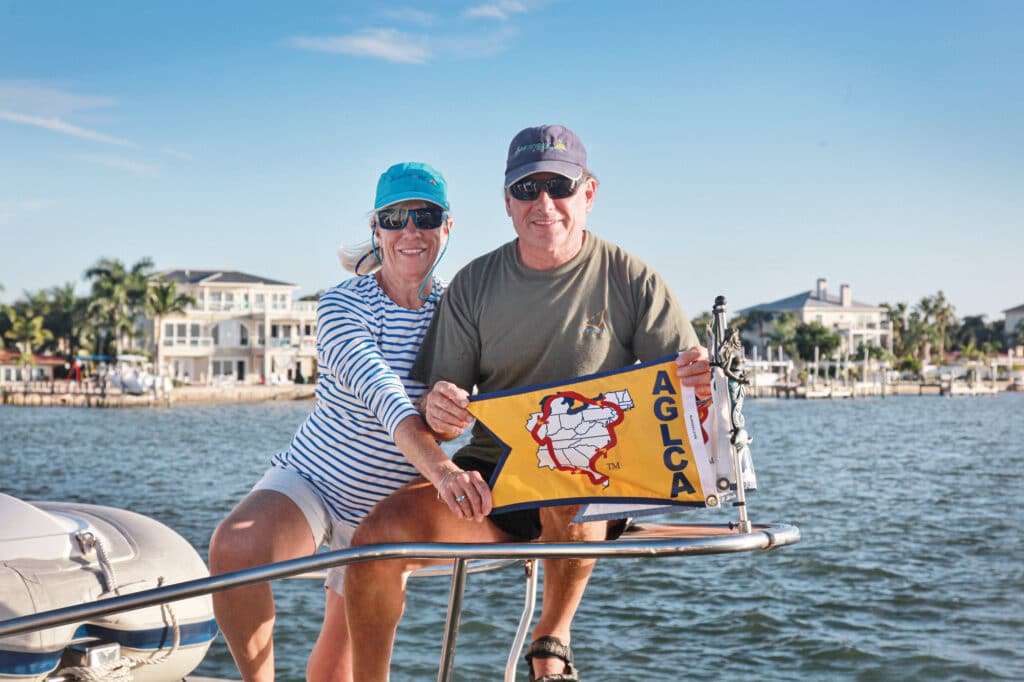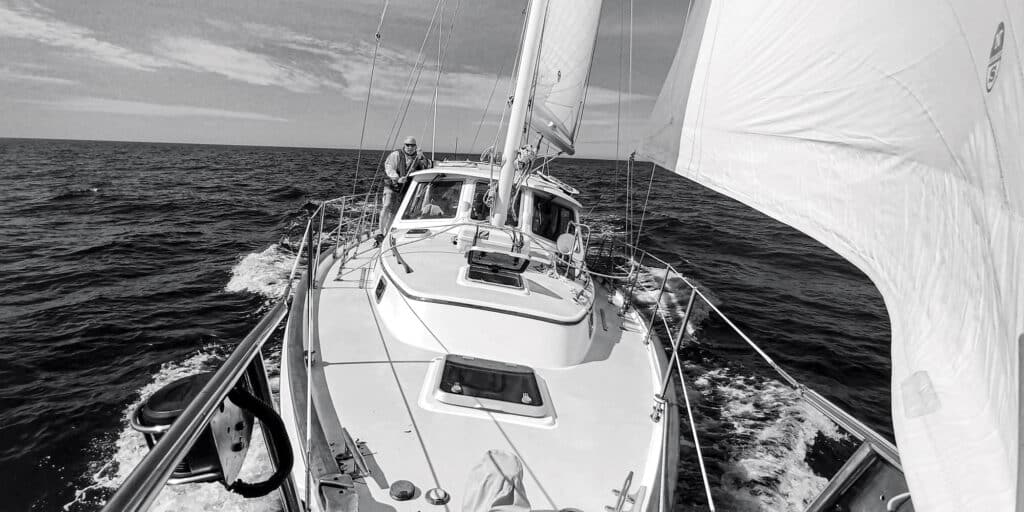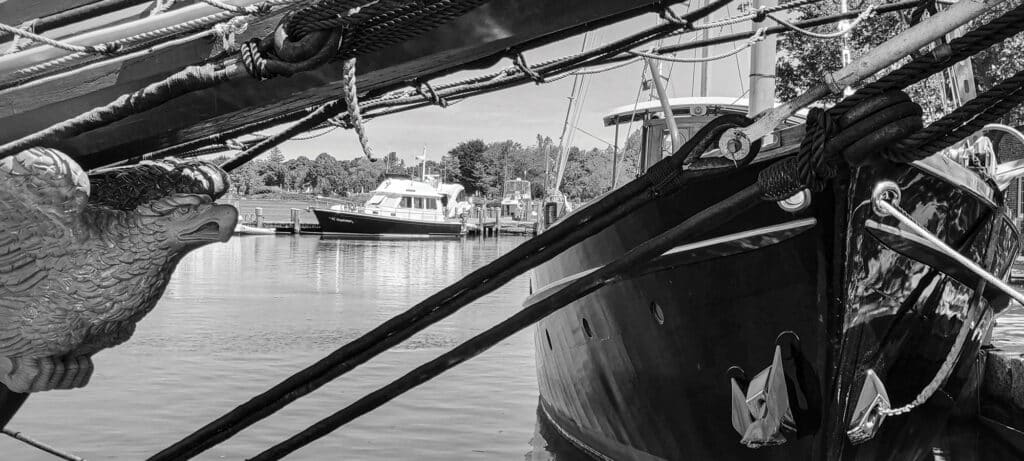
Phil and Karen Barbalace had different ideas about boating.
For Phil, who first hit the water in the 1980s, the experience was often about pushing limits. “I’m kind of a rough-and-tumble person,” he says. “When I go sailing, I really go sailing. We bury the bow and stuff like that.”
For Karen, who grew up sailing around Annapolis, Maryland, on her father’s Aquarius 21, boating was more about relaxing. “I liked to go along and experience being on the water,” she says.
They married in 1986 and bought a Hunter 34, which they cruised around the Chesapeake Bay. They sometimes ventured a bit farther—say, up to New Jersey—but mostly, they stuck closer to home. Then, around 2006, Phil got into ocean sailing. He crewed on boats from the Chesapeake to the Virgin Islands and Bermuda, and was so enthused that he wanted to try similar runs with Karen.
There was just one problem: Karen had zero interest in more adventurous cruising.
Enter the idea of the Great Loop, which Phil learned existed from a magazine around 2010. The Great Loop is a series of connecting waterways that encircles half the United States. Cruisers can navigate from the East Coast’s Intracoastal Waterway north to the Erie Canal and across the Great Lakes, then down the Mississippi River and across the Gulf of Mexico to Florida, and then back to the East Coast.
Generally speaking, the loop is 5,250 to 6,000 miles, depending on the routes mariners choose. The starting point can be anywhere, the loop can be made in either direction, and there are options for offshoots into Canada and more. People have completed the Great Loop in everything from kayaks to 70-foot yachts—anything that can fit beneath the route’s lowest bridge, which has a clearance just shy of 20 feet on the Illinois River.

When Phil learned about the Great Loop, he and Karen had a 20-foot Sea Ray that they used for wakeboarding with their teenage sons. One of the boys went off to college in Florida, and Phil saw an opportunity.
Their son trailered the Sea Ray to Florida, and Phil and Karen cruised the boat up the East Coast, back to Virginia. “We got on this boat with duffel bags, a cooler and folding bicycles,” Karen says. “It had an open cockpit, you couldn’t sleep on it, but we brought it all the way from Miami to Norfolk.”
Along the route, which ended up being 1,095 miles, they stayed in bed-and-breakfasts. The boat did 26 knots, so they’d cruise for two or three hours, then hang out at a hotel pool before going out to dinner. With a weeklong break for bad weather in North Carolina, the trip took about a month.
“We had done a lot of little bits and pieces of the ICW, just little day trips,” Karen says, “but this was my first time really seeing this beautiful waterway, and I loved it. It was a lot of fun.”
And so, the Great Loop became part of their plans. They bought a Mainship 40 for its flybridge and the master stateroom’s walk-around berth, spent a year upgrading the electronics and getting comfortable aboard, and completed the loop in 91 days of cruising spread out over two years.
“We had perfect weather 89 days,” Phil says. “We had rain two days. It was unbelievable.”

And it was a totally different approach to the Great Loop than the one Steve and Mary Ellen Woiler took—showing just how varied the loop can be for different kinds of cruisers.
The Woilers live in Syracuse, New York, and have been sailing and racing on Lake Ontario for 40 years, mostly with their Niagara 31. In 2005, they bought a Tartan 34C with the idea of cruising down South. “You know how things get in the winter in the Northeast,” Mary Ellen says. “We wanted to be two-boat owners.”
It took them seven years to rebuild the Tartan, which they christened Seven Sundays. They spent about $80,000, and Steve did the work himself. In 2012, they launched, and in 2013, they started making their way south down the Hudson River to New York City. They’d cruise for a few months, leave the boat, catch an Uber back to their car, drive home for a spell, and then repeat.
“At that point, we weren’t doing the Great Loop,” Steve says. “We were just puttering. It didn’t matter how long it took us to get wherever we went; we wanted to check out every town and smell every one of the roses. We didn’t even know the loop existed. Our only plan was to putter down the East Coast, find a place to put the boat in Florida, and maybe go to the Bahamas.”
Somewhere around Fort Myers, Florida, they saw an ad for the Great Loop. They figured they were already halfway done, so they might as well go for it.
They joined America’s Great Loop Cruisers’ Association and started chatting with other loopers. They realized they’d probably passed tons of them without knowing what the burgees meant. (White means loop in progress, gold means loop completed, and platinum means loop completed more than once.) And Mary Ellen decided that if they were going to complete the loop in comfort, they’d need a bigger boat.

The Cabo Rico Northeast 400 suited their needs, both for finishing the loop and for later use as a winter getaway based in Florida. “This motorsailer has inside steering, outside steering, air conditioning, heat—it’s a cottage on the water that sails,” Steve says.
They bought it in early 2020, christened it Remedy and headed for the Great Lakes.
“We actually did the loop in two different boats,” Mary Ellen says. “We did the eastern part in the Tartan and the western part in the Cabo Rico.”
They learned that having to take a mast up and down along the route was doable but not easy. “The few sailors that do the Great Loop, they ship their masts from Chicago to Florida,” Steve says. “I took ours with us, and I built the structure that would hold it.”
Nine years later, they crossed their wake and completed the loop. Steve worked along the way at his careers in photography and insurance, and Mary Ellen took time off from her job as a nurse practitioner.
“We were on the boat for four to five months a year, every year,” Steve says.
Today, they’re retired and enjoying time with their grandchildren—as well as moving into powerboating.
Their new ride is a Grand Banks Eastbay 40, also named Remedy. They plan to use it for “mini loops” in places they missed on the Great Loop, including the Trent-Severn Waterway in Ontario and the Canadian part of the Great Lakes.
“You can do it any way you want,” Mary Ellen says. “It’s a wonderful way to see the world.”
The Bridge That Matters Most
It’s located on the Chicago Sanitary and Ship Canal, which is sometimes called the Chicago Drainage Canal. This bridge is the one that, more than any other, determines the maximum air draft of a boat doing the Great Loop (and thus, which boats can actually be used to complete the loop). The bridge has a clearance height just shy of 20 feet. It’s a fixed bridge, and there’s no other route boaters can take to complete the loop.
As You Like It
There really is no right or wrong way to complete the Great Loop. Some people save up time and money, and then do the whole shebang in less than a year, following the seasons in one direction or the other. Some people spend years or more than a decade going back and forth to their boats from home or working along the way. All that matters in the end is being able to say that you crossed your own wake somewhere on the route.
Tips From Experienced Loopers
The big piece of advice that both couples interviewed for this article offered is that you should do the loop in the boat and time frame that best suit your needs. Those needs, they learned, can change along the way. The boat you start out in might not be the one you finish in. The route you think you’ll take can switch because of weather, reasons back home, closures for construction or—heaven forbid it happens again—a pandemic. Their best advice is to go with the flow, whatever your flow happens to be.









